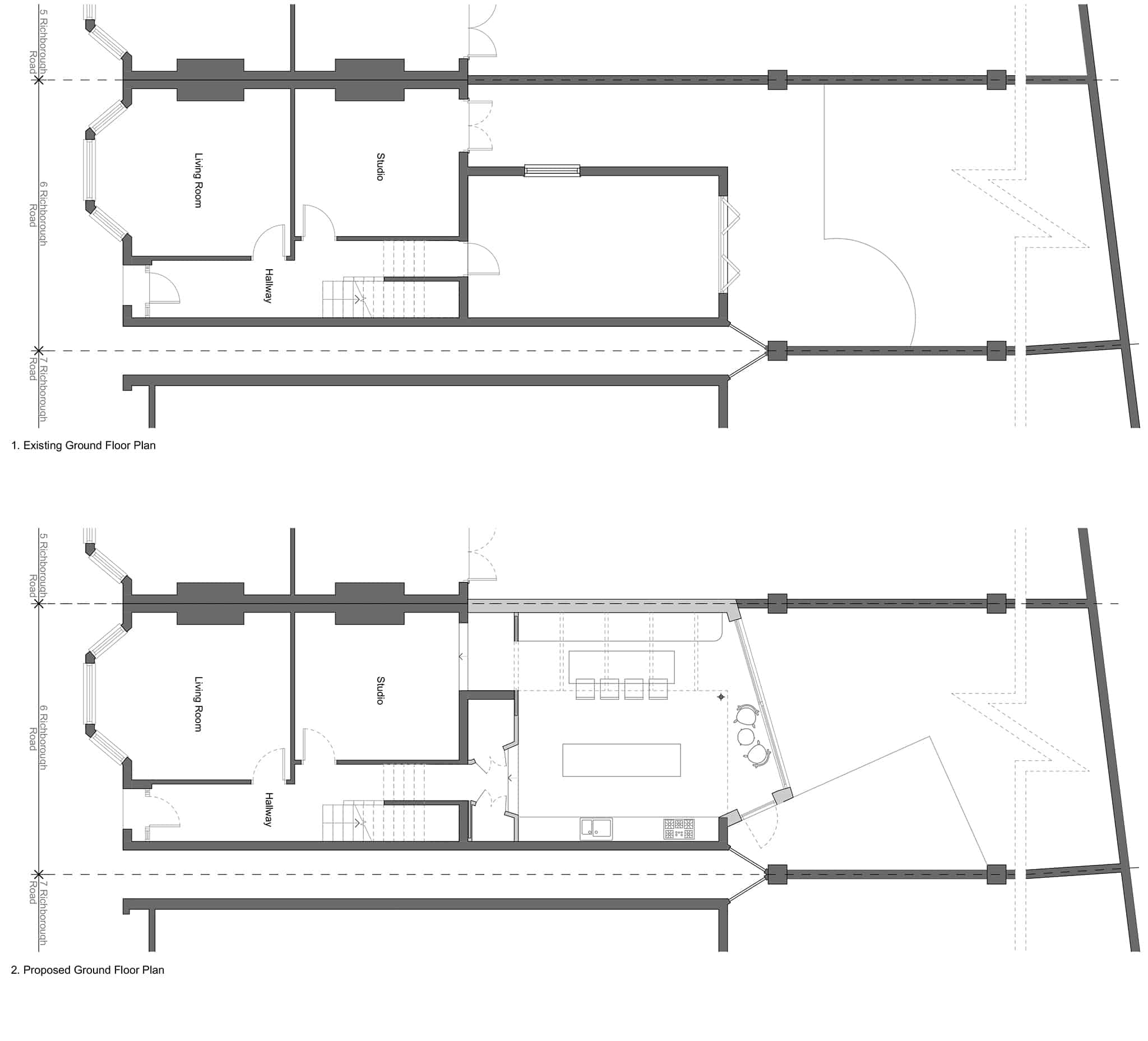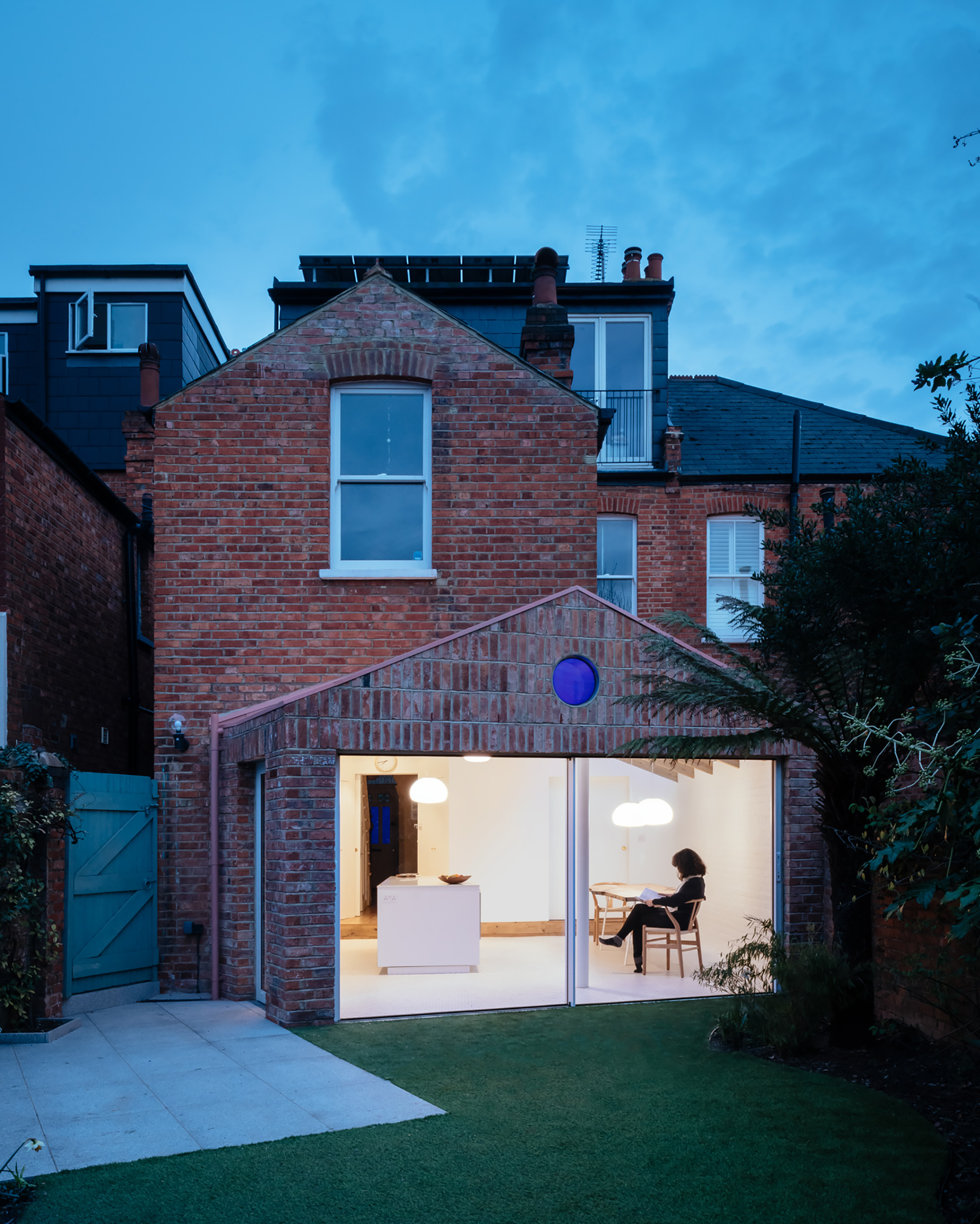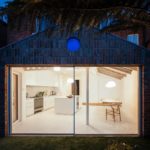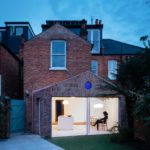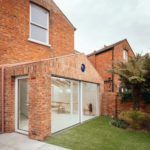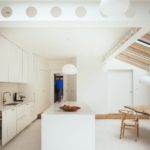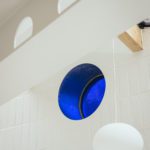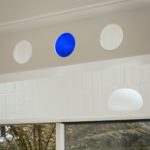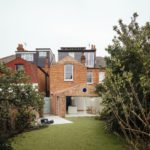Project Credits & Specs:
- Architects: VATRAA
- Photographs: Jim Stephenson
- Location: London, UK
- Status: Completed 2020
- Program: Wraparound extension, ground floor refurbishment
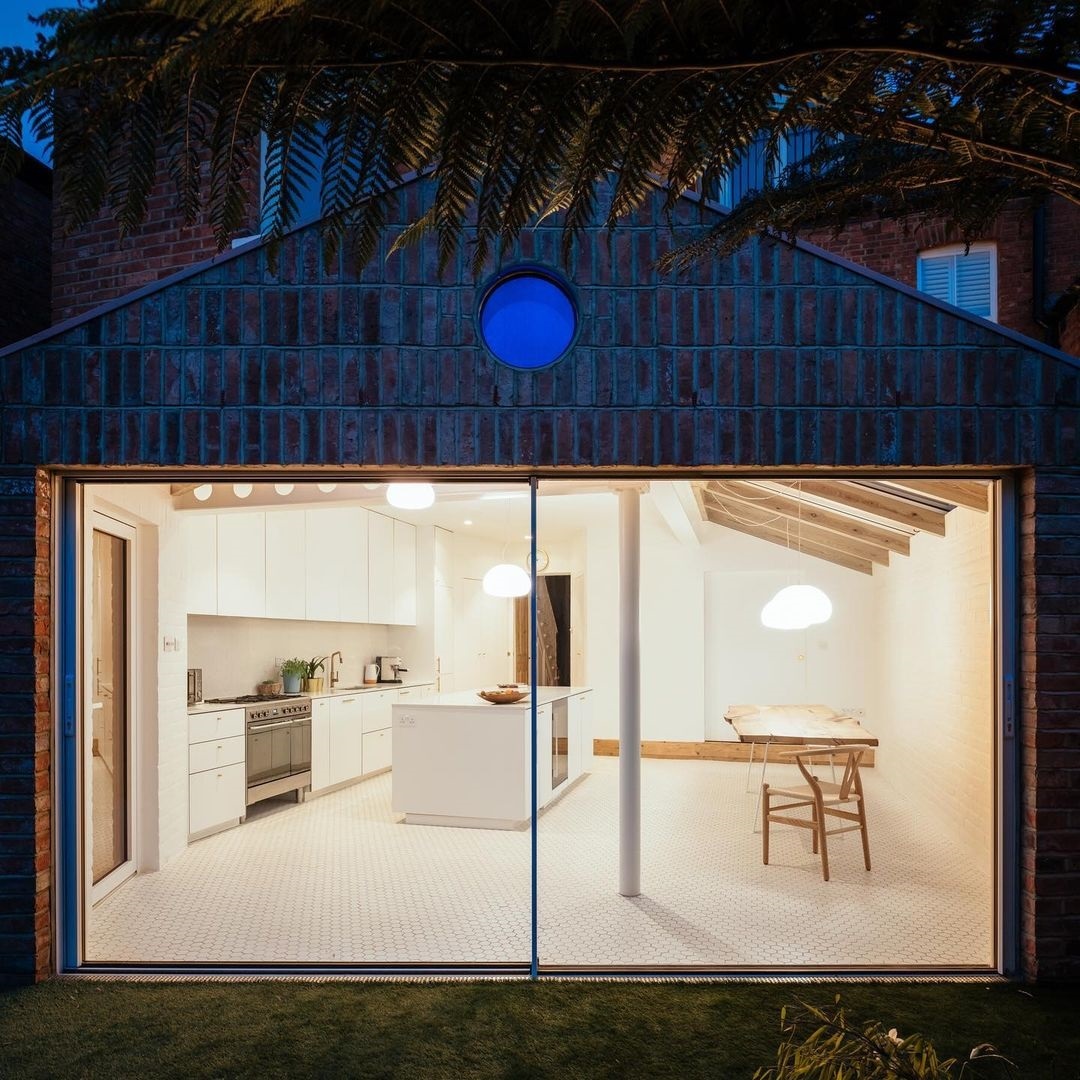
Reuse approach
The project demonstrates how reusing materials can have a powerful architectural impact while reducing the CO2 footprint.
The most sustainable way to implement a ‘reuse’ approach I to find a meaningful purpose for materials resulting from on-site demolitions. Therefore, instead of (1) transporting discarded materials to landfill and (2) having new materials fabricated and shipped on-site, we could just find ways to work with what is already there.
In our case, we reused 99% of the bricks that resulted from the demolition of the original flank and rear walls to build the new external walls of the wraparound extension. The result is a complementary addition that feels part of a whole while respecting the character of the old Victorian house.
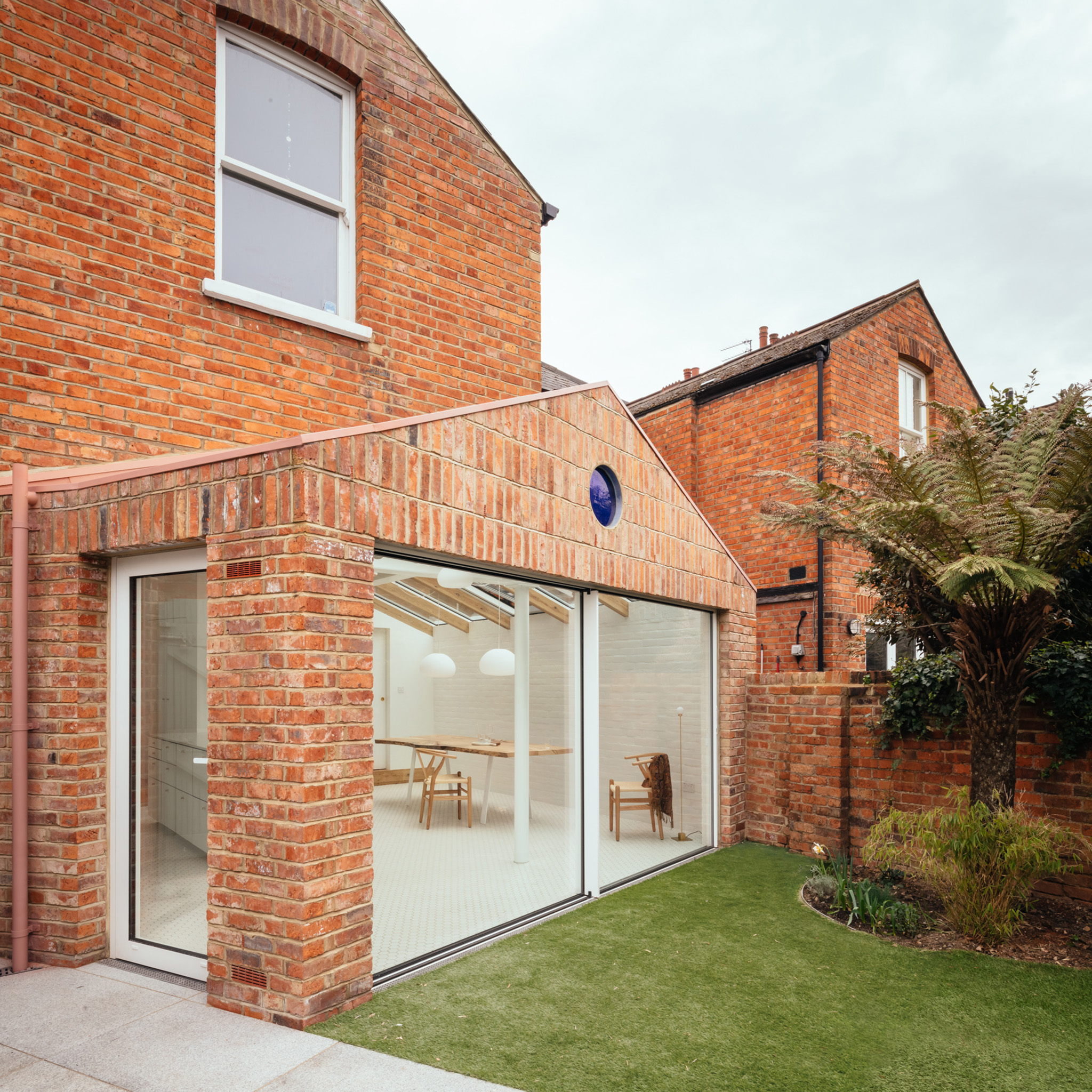

Functionality
The main requirements of the brief were: an efficient layout and storage space, enhancing the feeling of space, maximum natural light, and a stronger relationship with the garden, all in a sensitive intervention that brings homage to the old Victorian house.
In elevation, the gable inspired by the roofline of the original building maximizes internal height and natural light captured through the fully glazed roof.
The homeowners wanted a strong relationship with the garden and maximized views, but they were concerned about the practicality of using a heavy, large sliding as the main access.
In plan, the solution came as a response to this practical constraint: we angled the volume to (1) face the wilder, more interesting part of the garden and (2) create a side door for a more practical, day-to-day access to the garden. Therefore, a large sliding door remains as minimalist as possible, maximizing natural light and views of the garden.
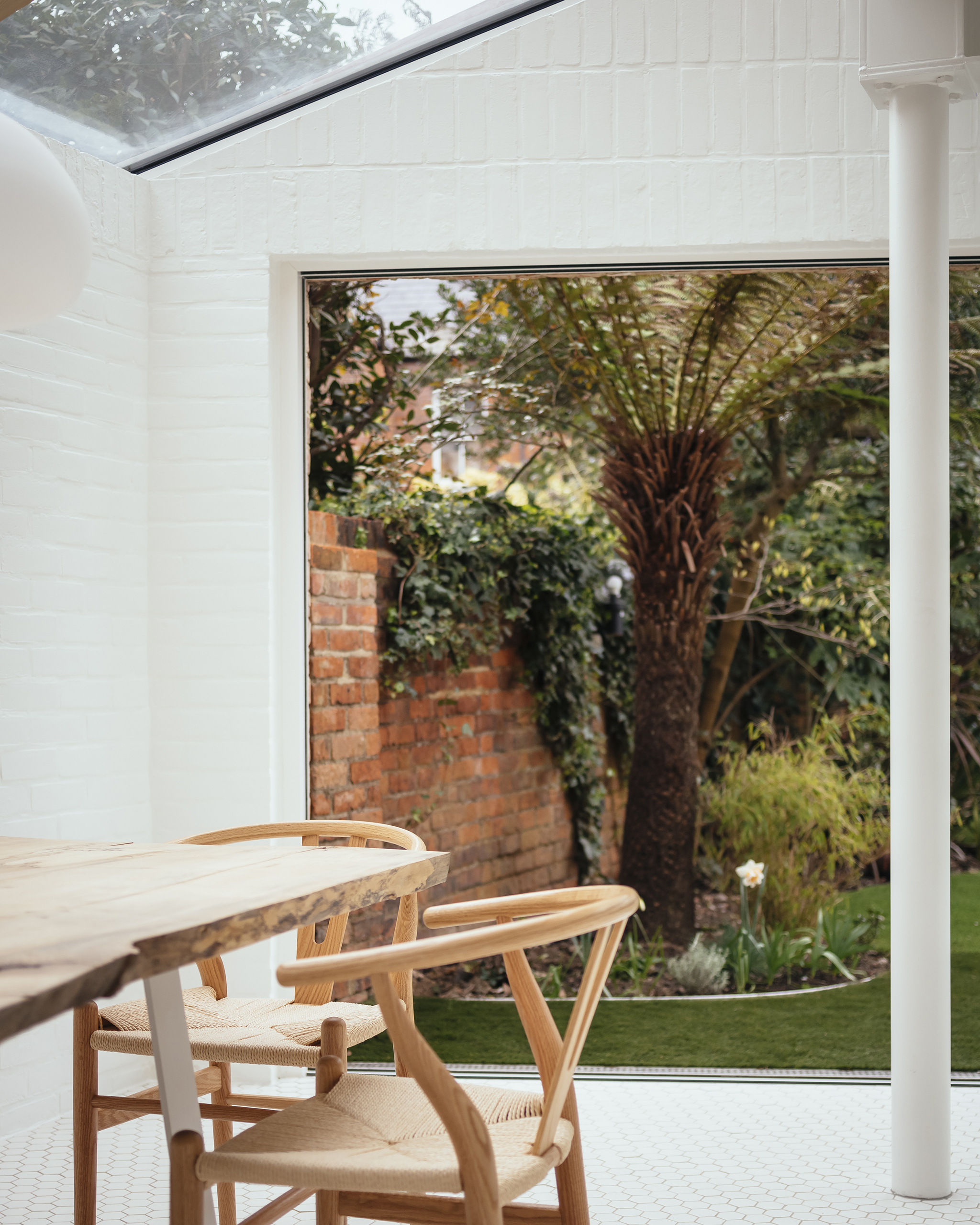
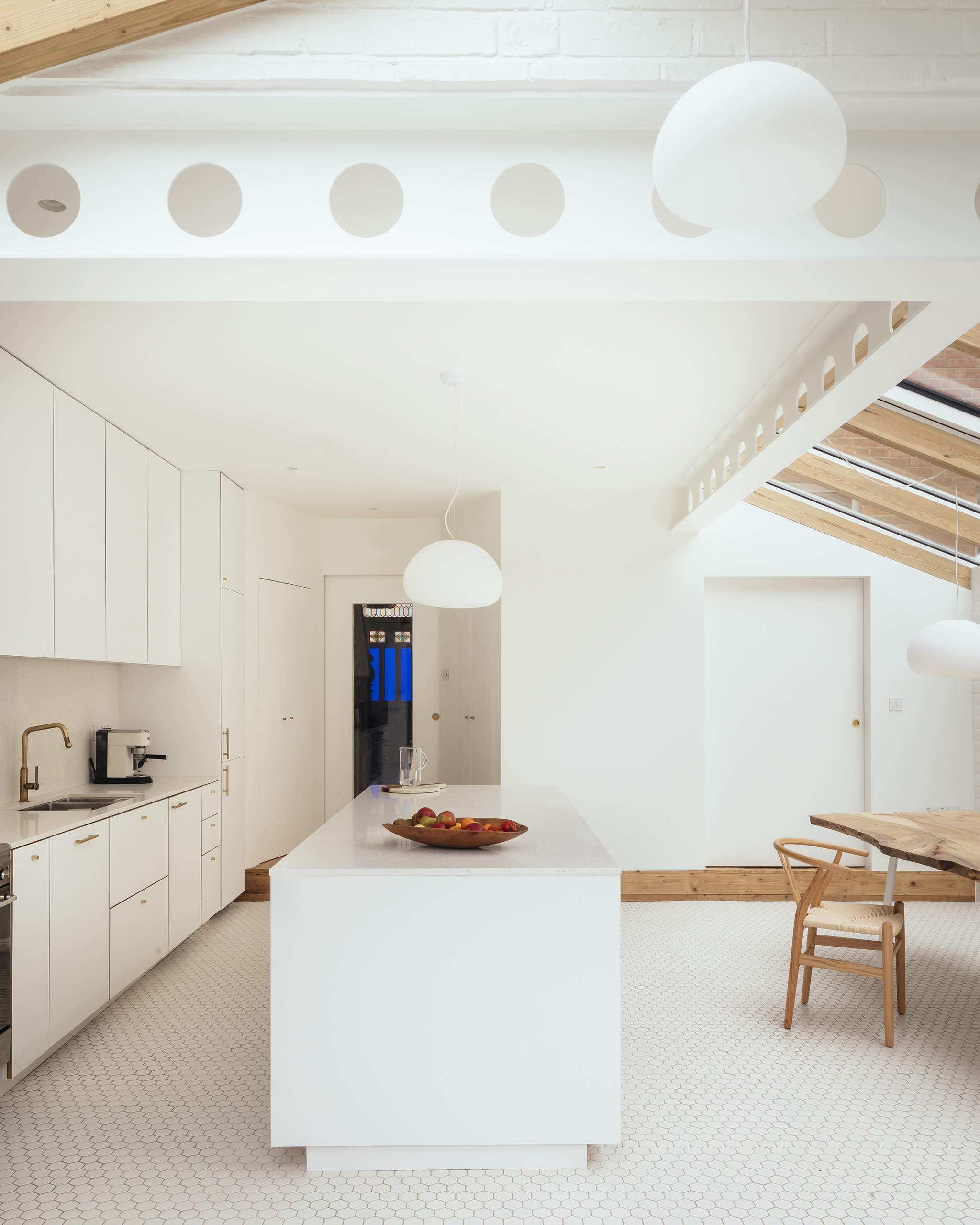
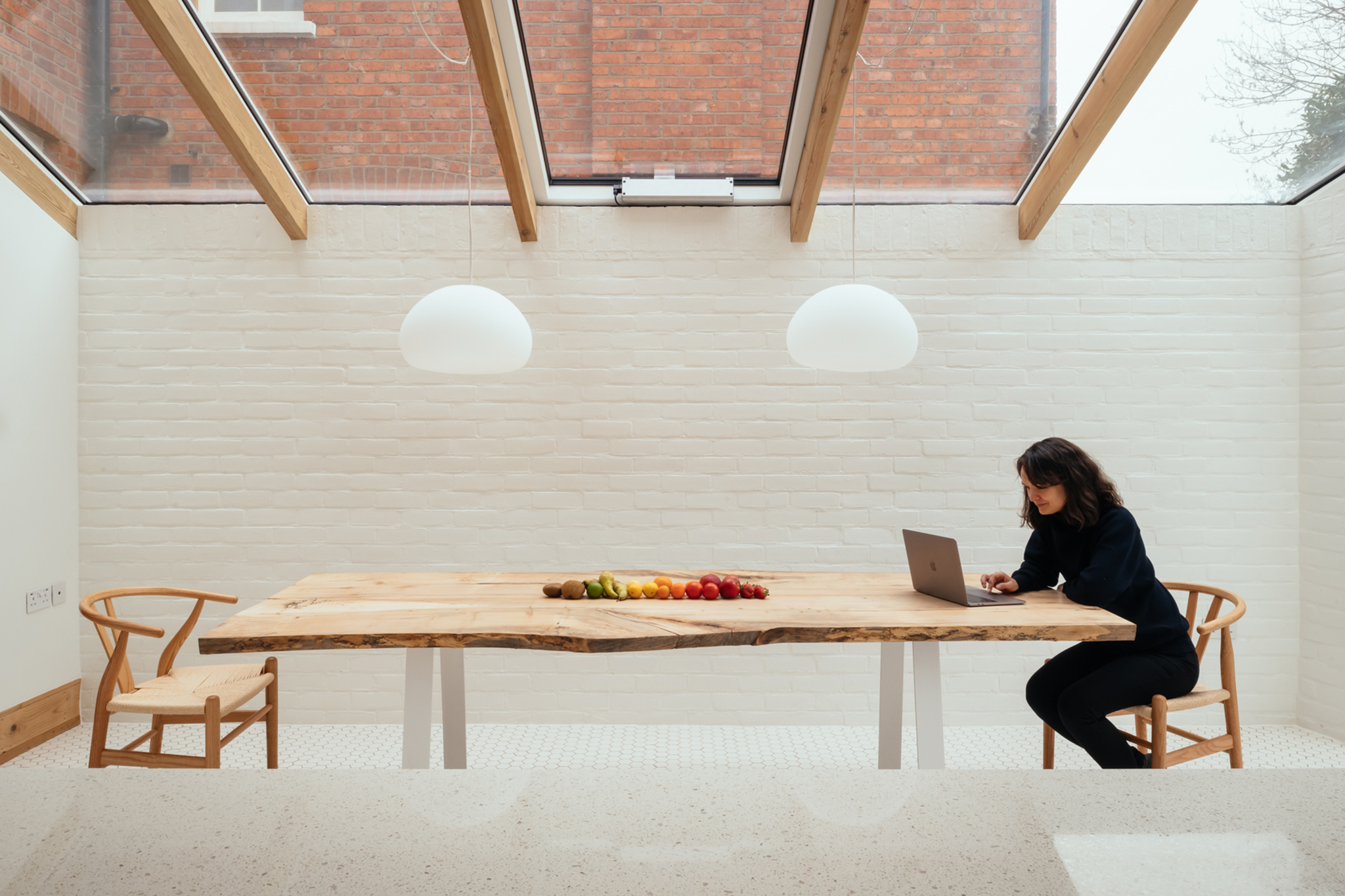
Contextual integration
The context played an important role in defining not only the outside but also the inside.
On the outside, the extension relates to the surroundings through its form and materials. The gable shape continues a series of similar archetypes found around the property. The salvaged red brick takes a new life in a new vertical bond that together with the blue stained glass, brings a subtle reference to the ‘pediment’ (or ‘fronton’) found in classical architecture.
To create a strong inside-outside relationship, the brick is brought to form the internal leaf of the cavity walls, this time, in a white finish to absorb natural light and highlight the vibrant red brick facade.



Inside and Outside
On the inside, the client wanted a minimalist, white interior. In response, we brought a twist to the ‘all-white’ requirement in order to offer a tactile quality to the space. While respecting the white palette, we played with different textures and patterns (hexagonal tiles, rectangular bricks, cellular beams), that bring character and react in the presence of natural light.
The dining table top cut from a large, single piece of oak is left as natural as possible, to stand out on the background of the ‘artificial’, clean, white lines.
The result is a simple space that brings the outside in while making one appreciate the soft, green garden or the vibrant, red brick walls of the surrounding buildings.

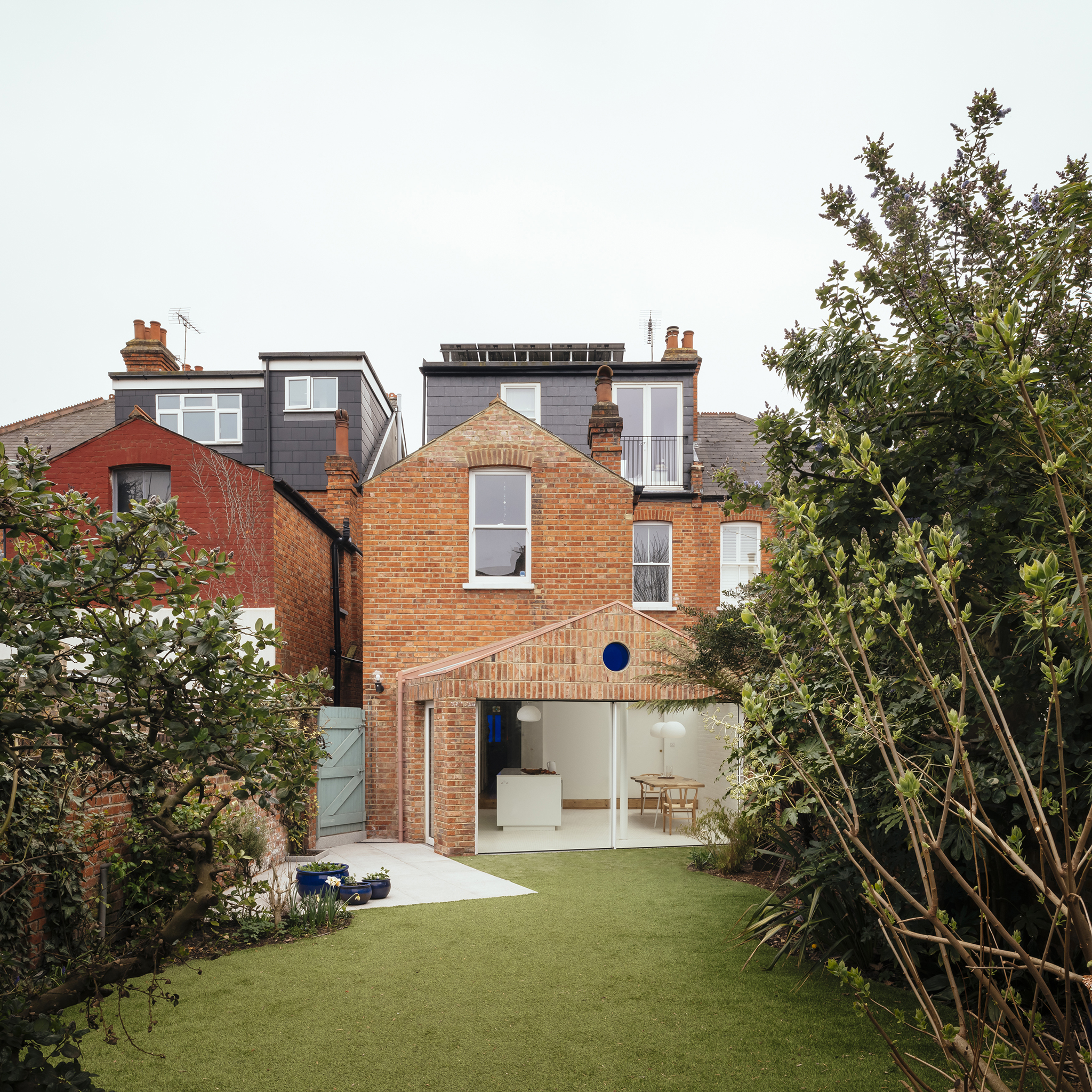
Function and Aesthetic
All design elements serve both a functional and an aesthetic role.
The floor tiles provide a durable kitchen floor surface while their dense pattern makes the space seem larger than it actually is.
The cellular beams mark the transition between the new and the old while allowing more natural light to penetrate the old part of the building.
The exposed brick structure is a cost-effective way to reduce the need for any additional finishes.
Finally, the round window with its blue stained glass is the only colour insertion. By matching the colour of the other stained glass elements found in the original building (see the bottom left image with the blue glass entrance door), it brings energy into the space while reconnecting the new and the old.
